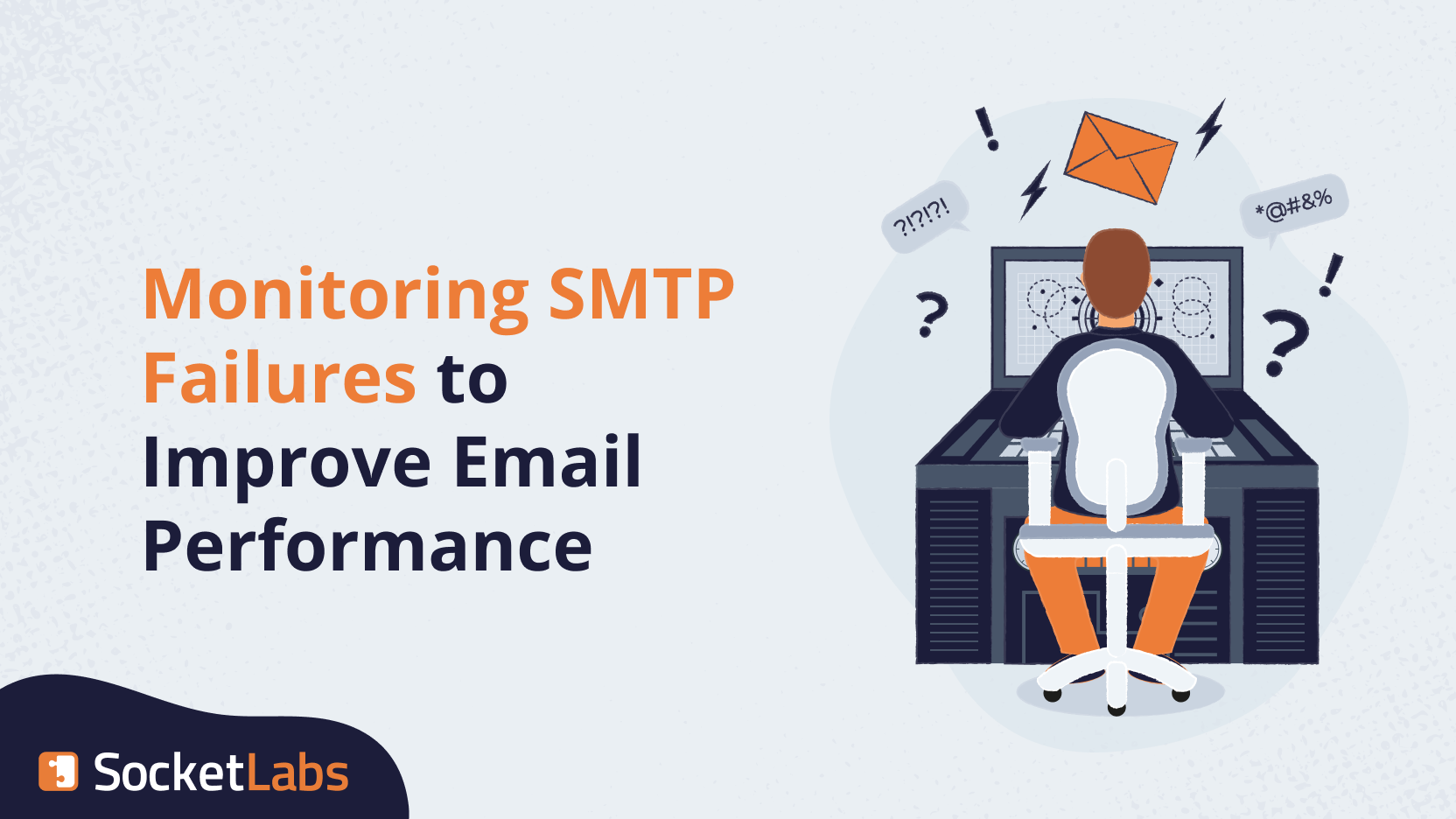
Like we’ve covered before, simple mail transfer protocol (SMTP) is the common standard for sending email, especially when talking about transactional emails like password resets and shipping notifications. However, though it’s reliable and been in use for decades now (wow), it’s not something you want to trust blindly because you still will experience SMTP failures no matter who you are.
Various issues affecting delivery can occur during transmission. If you’re unfamiliar with what those hiccups are and what their impact may be, it’s time to get in the know. Let’s take a look at common failures, how to detect them, and what you can do to fix or prevent them in the future.
Differentiating Between Synchronous and Asynchronous SMTP Failures
Email delivery failures fall into two categories: synchronous and asynchronous.
Synchronous failures occur when the remote mail server rejects the message during the initial conversation with the SMTP server. Consider this fairly immediate without a ton of fuss.
In contrast, asynchronous failures happen when the remote mail server initially accepts the message but later returns a Non-Delivery Report (NDR) to the return path, indicating failure. Asynchronous failures are commonly referred to as email bounces, which can be either hard or soft.
Understanding Email Delivery Error Messages
SMTP failures result from a range of factors, and though “failure” is a loaded and scary word, when you find and action each one, you can improve your deliverability over time.
Identifying the meaning of each SMTP failure message can be challenging because there are a variety of codes. Gmail has a great resource on individual codes and their meanings.
From a reason-for-failure perspective, these three common types of email delivery error messages can shed light on message failures as a whole:
- Permanent errors: Your message was returned by the recipient mail server and no further attempts will be made to deliver it. The most common reason for a permanent error is a non-existent domain or unknown recipient. This is where having a clean list will come in handy. The better your list, the fewer permanent errors you’ll encounter.
- Temporary errors: Your message is not immediately accepted by the receiving mailbox but will remain in the queue to try again later. Temporary errors can result from various causes, such as a full recipient mailbox or issues connecting to the MX records of the receiving domain. See, this one isn’t necessarily your fault!
- Email greylisting: Email greylisting involves temporarily rejecting a message, prompting the sender to attempt a resend. This measure prevents unwanted mail from flooding inboxes, as legitimate senders typically make a second attempt while spammers and bots do not. Email greylisting commonly affects new IP addresses, low-volume mail systems, and senders with a low reputation.
Using an SMTP Monitoring Tool
Monitoring and reporting on email message failures can be complex, particularly for asynchronous failures. SMTP protocols require these failures to be sent as NDRs to the return path, so you’ll need a good process to collect, parse, and analyze your NDRs.
SMTP relay services like the one we offer provide a centralized platform to give you real-time views into message status, including these all-important SMTP failures. Once you see a delivery failure, you can spring into action using our other tools to determine what happened and why. Low StreamScore? That could be a factor. Dirty lists? Our Guided Insights feature can tell you that, too, helping you to pinpoint what needs to change to avoid more SMTP failures in the future.
Once you know the reason, though, it’s important to make changes. If you keep trying to deliver mail to addresses with a history of hard-bouncing, you’re going to damage your sender reputation, making it harder to delivery mail to anyone, anywhere.
Monitoring Beyond SMTP Failures
Monitoring for SMTP failures is important, right, but effective monitoring shouldn’t stop at failures. If you’re concerned about deliverability and email performance, you should be keeping a close eye on the following:
- Complaints: Actively manage spam complaints and remove addresses who’ve complained from all lists.
- DNS records: Regularly review your DNS record(s) to prevent delivery issues caused by configuration errors.
- Blocklistings: Keep your sending IP address off well-known and influential blocklists. You’ll typically notice an issue if you have a large amount of blocked mail, and from there, you can do some investigating to see where you may be listed.
- Outages: Monitor network outages and application failures where you can, because if your provider is experiencing an outage, you might get an influx of synchronous failures.
SMTP Failures Aren’t [Always] Personal Failures
As you can see, there are a bunch of reasons your mail might fail SMTP. That’s why it is so important to diligently monitor performance. Without understanding what is happening and then investigating why, you won’t be able to make meaningful change to improve (or just protect) your email performance.
That’s why we do what we do. Give us a shot for free to see what a difference a partner like SocketLabs can make for your email.







